

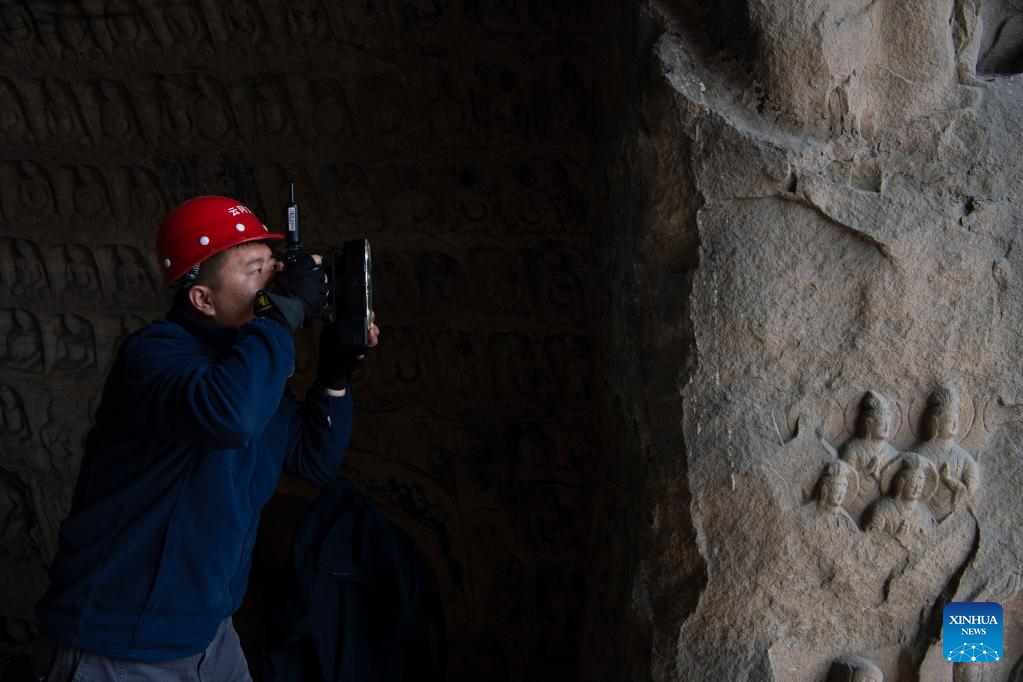
A technician collects information of relics in Cave 17 of the Yungang Grottoes in Datong, north China's Shanxi Province, May 11, 2022.
A group of technicians of the Yungang Research Institute are striving to create digital versions of Cave 17 of the Yungang Grottoes in Datong, north China's Shanxi Province.
The institute is dedicated to protection, research and management of the Yungang Grottoes. In recent years, working staff of the institute have been engaged in collecting and digitalizing information of the grottoes relics for the purpose of facilitating digital archives of them.
The digitalization of the information is meant to explore new feasible methods of researching on the relics and to keep them in reliable and lasting protection.
The Yungang Grottoes, with 45 major caves and more than 59,000 statues, were inscribed on the UNESCO World Heritage List in 2001.
To date, one-third of the overall information collection and digitalization work has been completed. (Xinhua/Yang Chenguang)
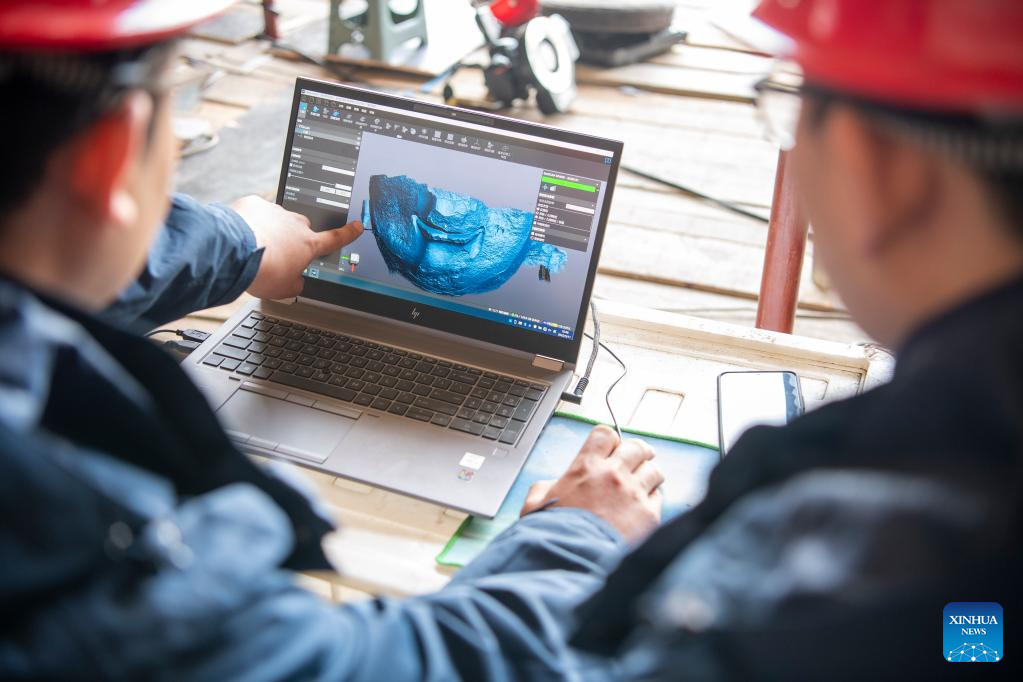
Technicians collect information of relics in Cave 17 of the Yungang Grottoes in Datong, north China's Shanxi Province, May 11, 2022.
A group of technicians of the Yungang Research Institute are striving to create digital versions of Cave 17 of the Yungang Grottoes in Datong, north China's Shanxi Province.
The institute is dedicated to protection, research and management of the Yungang Grottoes. In recent years, working staff of the institute have been engaged in collecting and digitalizing information of the grottoes relics for the purpose of facilitating digital archives of them.
The digitalization of the information is meant to explore new feasible methods of researching on the relics and to keep them in reliable and lasting protection.
The Yungang Grottoes, with 45 major caves and more than 59,000 statues, were inscribed on the UNESCO World Heritage List in 2001.
To date, one-third of the overall information collection and digitalization work has been completed. (Xinhua/Yang Chenguang)

A technician collects information of relics in Cave 17 of the Yungang Grottoes in Datong, north China's Shanxi Province, May 11, 2022.
A group of technicians of the Yungang Research Institute are striving to create digital versions of Cave 17 of the Yungang Grottoes in Datong, north China's Shanxi Province.
The institute is dedicated to protection, research and management of the Yungang Grottoes. In recent years, working staff of the institute have been engaged in collecting and digitalizing information of the grottoes relics for the purpose of facilitating digital archives of them.
The digitalization of the information is meant to explore new feasible methods of researching on the relics and to keep them in reliable and lasting protection.
The Yungang Grottoes, with 45 major caves and more than 59,000 statues, were inscribed on the UNESCO World Heritage List in 2001.
To date, one-third of the overall information collection and digitalization work has been completed. (Xinhua/Yang Chenguang)
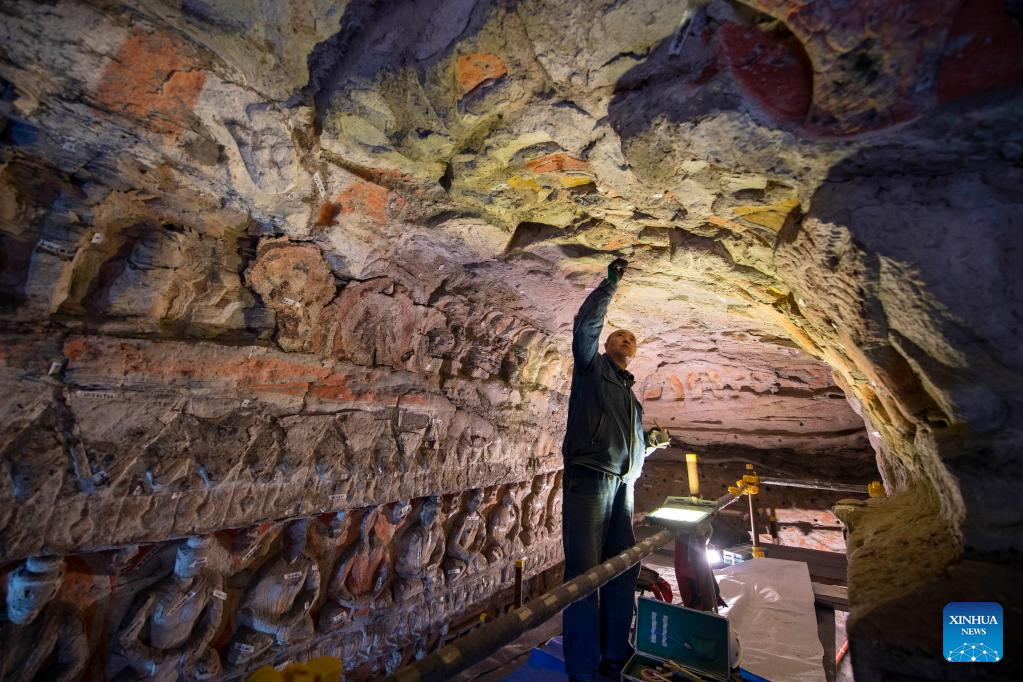
A staff member restores the wall of Cave 1 of the Yungang Grottoes in Datong, north China's Shanxi Province, May 11, 2022.
A group of technicians of the Yungang Research Institute are striving to create digital versions of Cave 17 of the Yungang Grottoes in Datong, north China's Shanxi Province.
The institute is dedicated to protection, research and management of the Yungang Grottoes. In recent years, working staff of the institute have been engaged in collecting and digitalizing information of the grottoes relics for the purpose of facilitating digital archives of them.
The digitalization of the information is meant to explore new feasible methods of researching on the relics and to keep them in reliable and lasting protection.
The Yungang Grottoes, with 45 major caves and more than 59,000 statues, were inscribed on the UNESCO World Heritage List in 2001.
To date, one-third of the overall information collection and digitalization work has been completed. (Xinhua/Yang Chenguang)
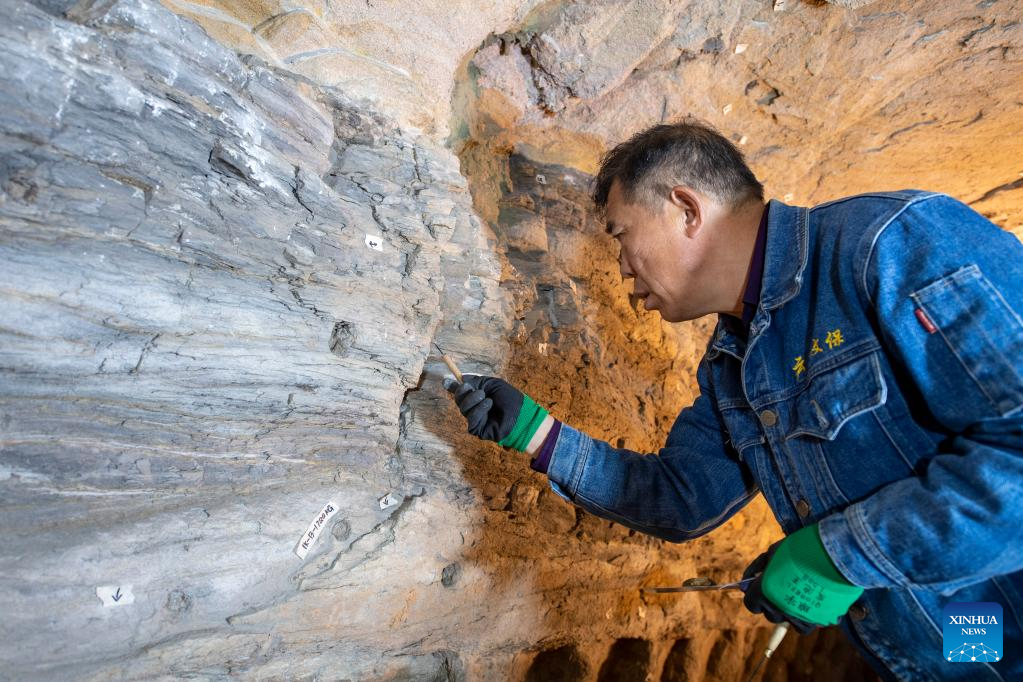
A staff member restores the wall of Cave 1 of the Yungang Grottoes in Datong, north China's Shanxi Province, May 11, 2022.
A group of technicians of the Yungang Research Institute are striving to create digital versions of Cave 17 of the Yungang Grottoes in Datong, north China's Shanxi Province.
The institute is dedicated to protection, research and management of the Yungang Grottoes. In recent years, working staff of the institute have been engaged in collecting and digitalizing information of the grottoes relics for the purpose of facilitating digital archives of them.
The digitalization of the information is meant to explore new feasible methods of researching on the relics and to keep them in reliable and lasting protection.
The Yungang Grottoes, with 45 major caves and more than 59,000 statues, were inscribed on the UNESCO World Heritage List in 2001.
To date, one-third of the overall information collection and digitalization work has been completed. (Xinhua/Yang Chenguang)
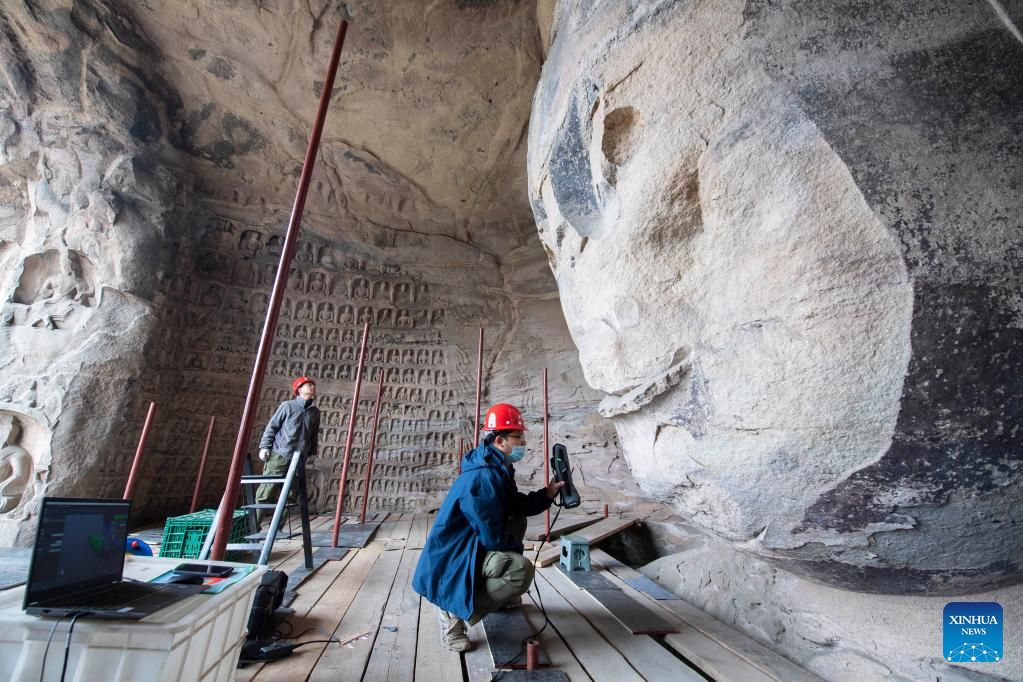
Technicians collect information of relics in Cave 17 of the Yungang Grottoes in Datong, north China's Shanxi Province, May 11, 2022.
A group of technicians of the Yungang Research Institute are striving to create digital versions of Cave 17 of the Yungang Grottoes in Datong, north China's Shanxi Province.
The institute is dedicated to protection, research and management of the Yungang Grottoes. In recent years, working staff of the institute have been engaged in collecting and digitalizing information of the grottoes relics for the purpose of facilitating digital archives of them.
The digitalization of the information is meant to explore new feasible methods of researching on the relics and to keep them in reliable and lasting protection.
The Yungang Grottoes, with 45 major caves and more than 59,000 statues, were inscribed on the UNESCO World Heritage List in 2001.
To date, one-third of the overall information collection and digitalization work has been completed. (Xinhua/Yang Chenguang)
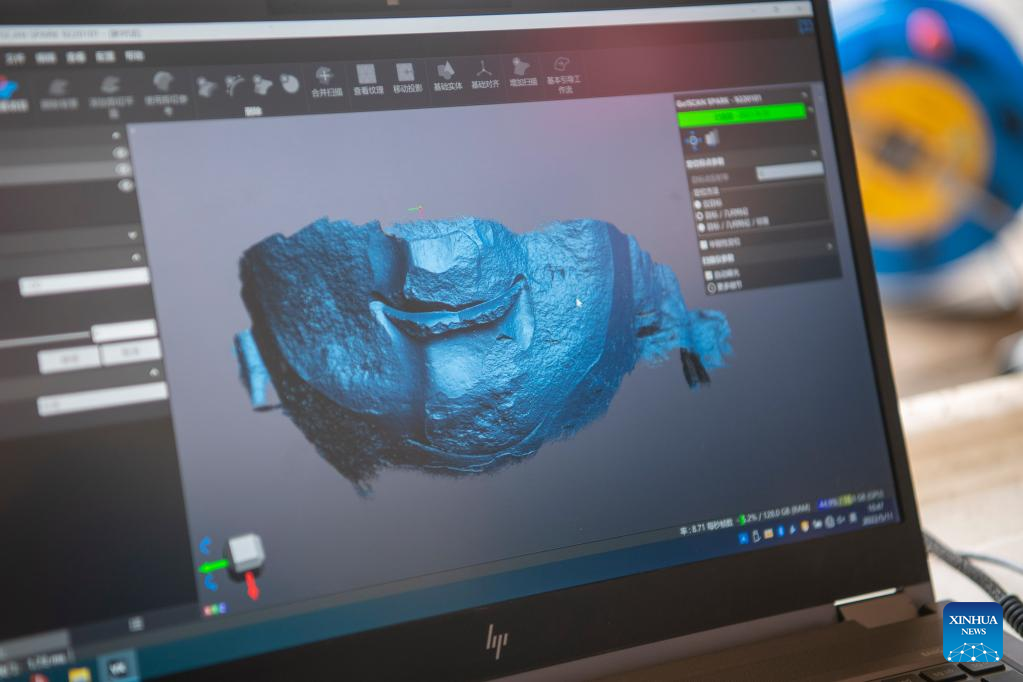
A three-dimensional image of a Buddha statue in Cave 17 of the Yungang Grottoes is seen on a screen in Datong, north China's Shanxi Province, May 11, 2022.
A group of technicians of the Yungang Research Institute are striving to create digital versions of Cave 17 of the Yungang Grottoes in Datong, north China's Shanxi Province.
The institute is dedicated to protection, research and management of the Yungang Grottoes. In recent years, working staff of the institute have been engaged in collecting and digitalizing information of the grottoes relics for the purpose of facilitating digital archives of them.
The digitalization of the information is meant to explore new feasible methods of researching on the relics and to keep them in reliable and lasting protection.
The Yungang Grottoes, with 45 major caves and more than 59,000 statues, were inscribed on the UNESCO World Heritage List in 2001.
To date, one-third of the overall information collection and digitalization work has been completed. (Xinhua/Yang Chenguang)
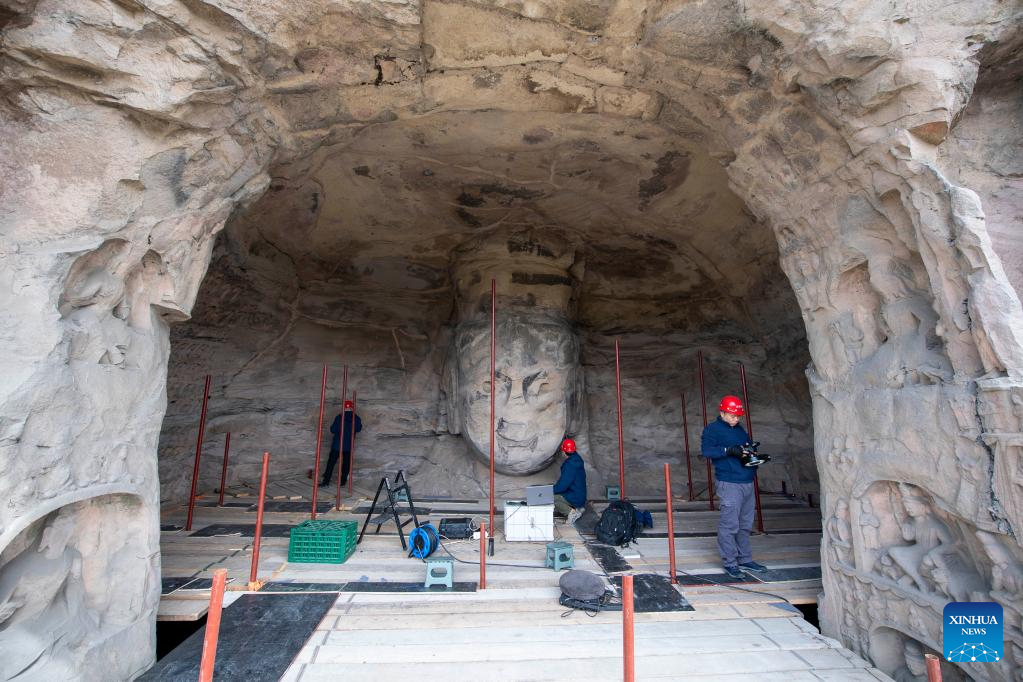
Technicians collect information of relics in Cave 17 of the Yungang Grottoes in Datong, north China's Shanxi Province, May 11, 2022.
A group of technicians of the Yungang Research Institute are striving to collect digital data of Cave 17 of the Yungang Grottoes in Datong.
The institute is dedicated to protection, research and management of the Yungang Grottoes. In recent years, staff of the institute have been engaged in collecting and digitalizing information of the grottoes relics for the purpose of facilitating digital archives of them.
The digitalization of the information is meant to explore new feasible methods of researching on the relics and to keep them in reliable and lasting protection.
The Yungang Grottoes, with 45 major caves and more than 59,000 statues, were inscribed on the UNESCO World Heritage List in 2001.
To date, one-third of the overall information collection and digitalization work has been completed. (Xinhua/Yang Chenguang)
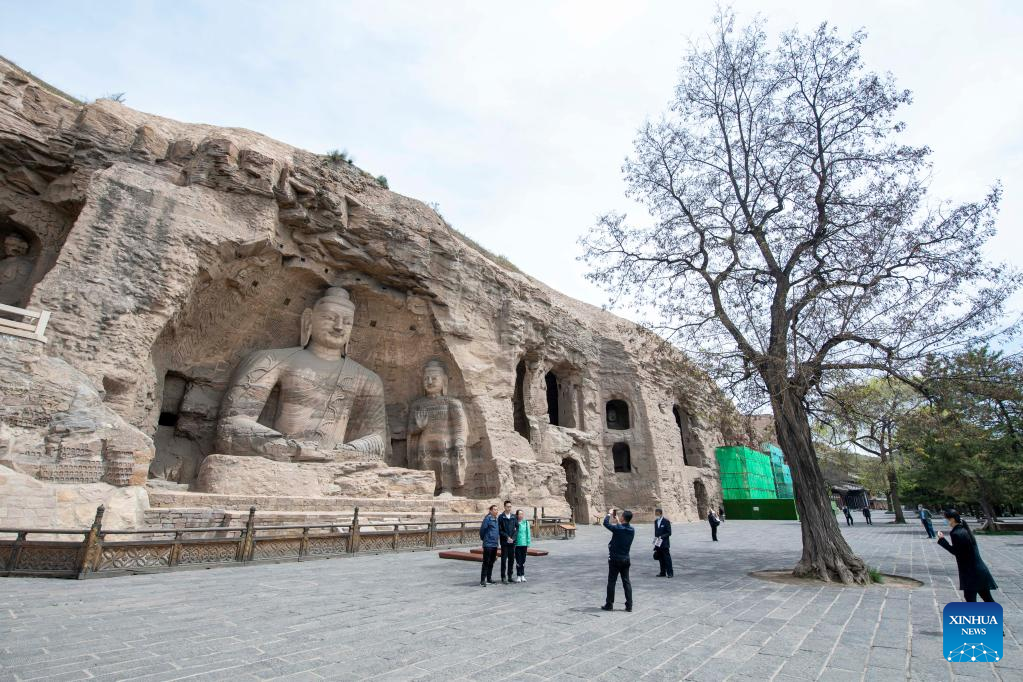
People visit the Yungang Grottoes in Datong, north China's Shanxi Province, May 11, 2022.
A group of technicians of the Yungang Research Institute are striving to create digital versions of Cave 17 of the Yungang Grottoes in Datong, north China's Shanxi Province.
The institute is dedicated to protection, research and management of the Yungang Grottoes. In recent years, working staff of the institute have been engaged in collecting and digitalizing information of the grottoes relics for the purpose of facilitating digital archives of them.
The digitalization of the information is meant to explore new feasible methods of researching on the relics and to keep them in reliable and lasting protection.
The Yungang Grottoes, with 45 major caves and more than 59,000 statues, were inscribed on the UNESCO World Heritage List in 2001.
To date, one-third of the overall information collection and digitalization work has been completed. (Xinhua/Yang Chenguang)
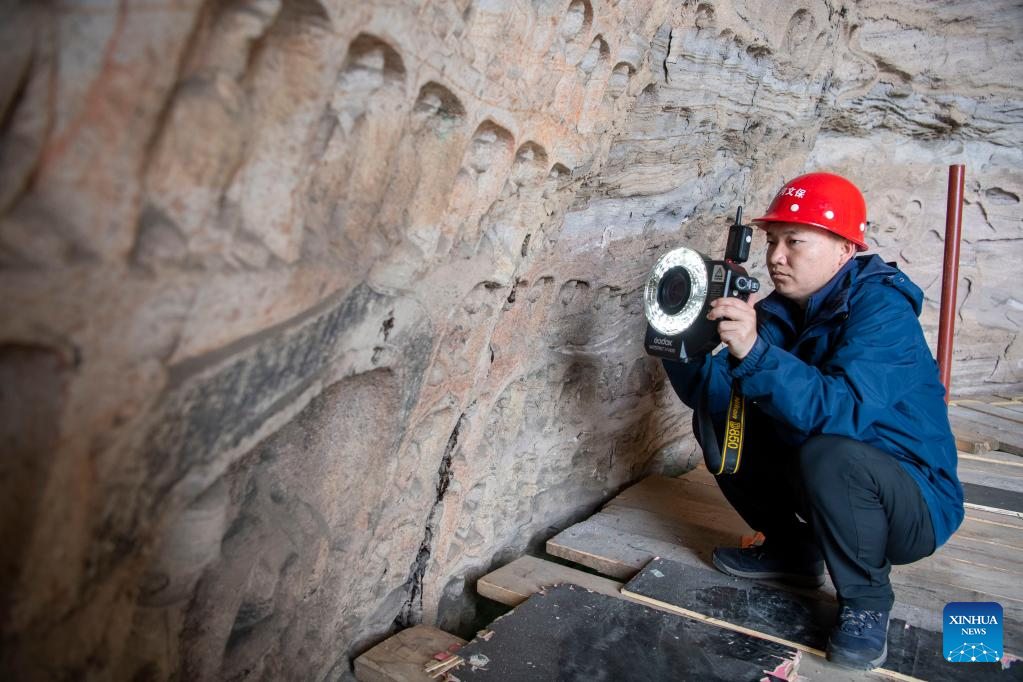
A technician collects information of relics in Cave 17 of the Yungang Grottoes in Datong, north China's Shanxi Province, May 11, 2022.
A group of technicians of the Yungang Research Institute are striving to create digital versions of Cave 17 of the Yungang Grottoes in Datong, north China's Shanxi Province.
The institute is dedicated to protection, research and management of the Yungang Grottoes. In recent years, working staff of the institute have been engaged in collecting and digitalizing information of the grottoes relics for the purpose of facilitating digital archives of them.
The digitalization of the information is meant to explore new feasible methods of researching on the relics and to keep them in reliable and lasting protection.
The Yungang Grottoes, with 45 major caves and more than 59,000 statues, were inscribed on the UNESCO World Heritage List in 2001.
To date, one-third of the overall information collection and digitalization work has been completed. (Xinhua/Yang Chenguang)
点击右上角![]() 微信好友
微信好友
 朋友圈
朋友圈

请使用浏览器分享功能进行分享
